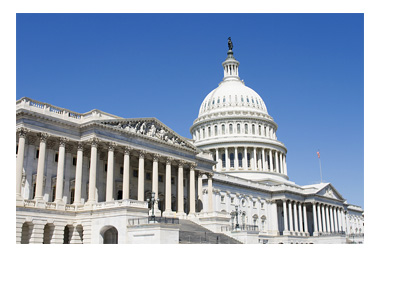Higher Interest Rates, Increasing Debt Load Will Be To Blame
 According to the CBO ("Congressional Budget Office"), which conducts nonpartisan analysis for Congress, the United States will be shelling out $800 billion per year in net interest payments by 2024.
According to the CBO ("Congressional Budget Office"), which conducts nonpartisan analysis for Congress, the United States will be shelling out $800 billion per year in net interest payments by 2024. The CBO estimates that the United States paid $231 billion in net interest payments for the recently concluded 2014 fiscal year. So, between now and 2024, the net interest payments for the United States are expected to more than triple.
Here is the expected progression from 2014 to 2024:
2014 - $231 billion
2015 - $251 billion
2016 - $287 billion
2017 - $340 billion
2018 - $412 billion
2019 - $492 billion
2020 - $566 billion
2021 - $627 billion
2022 - $687 billion
2023 - $746 billion
2024 - $799 billion
Why the big increase over the next decade? Two reasons - an increasing debt load and higher interest rates.
The CBO projects that the country will have federal deficits totalling $7.2 trillion between 2015 and 2024, and this will obviously add to the nation's already staggering $18 trillion (approximately) debt load. Add "other means of financing" to that total and you are left with $7.8 trillion in new debt that will be added over the next decade.
Interest rates are a big cause for concern for the US government as well. With an improving economy, interest rates have nowhere to go but up, and this will add significantly to the nation's borrowing costs over the coming decade. The interest rate on a 3-month Treasury Bill is expected to hit 3.5% in 2019, up from the 0.1% levels that were posted this past summer.
-
The CBO predicts that the country will be forking out 3.0% of its GDP by 2024, the highest such ratio since 1996.
Source: CBO.gov - CBO's Projection of Federal Interest Payments
Filed under: General Knowledge



